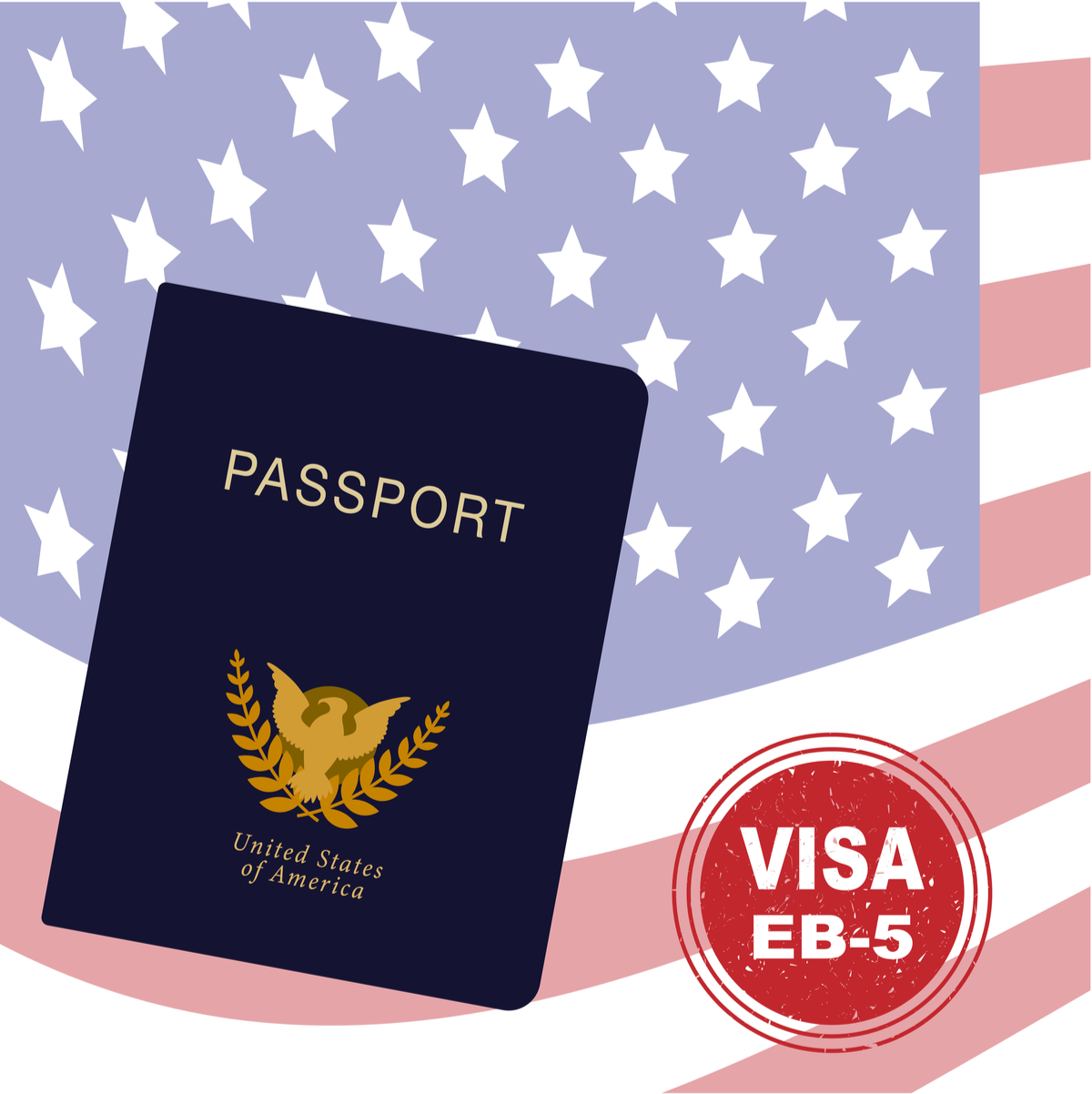 Introducing Kate’s Corner
Introducing Kate’s Corner
Kate Kalmykov is an immigration attorney serving on the editorial board of this publication. She lends her EB-5 expertise and approves topics and articles to ensure that we publish accurate and novel content.
Kate has almost a decade of EB-5 experience and is extremely knowledgeable in all aspects of the program. Kate is Of Counsel at Greenberg Traurig, where she focuses her practice on EB-5 immigrant investor matters. She regularly works with developers across a variety of industries, as well as private equity funds, on developing new projects that qualify for EB-5 investments. She also counsels foreign nationals on obtaining green cards through either individual or regional center EB-5 investments, as well as issues related to I-829 Removal of Conditions. She strives to make the EB-5 process easier to navigate for her clients.
Kate received her bachelor’s degree in international studies, her master’s degree and her Juris Doctor from American University. She speaks both English and Russian fluently and is a member of the American Bar Association, the American Immigration Lawyers Association and the New York AILA United States Citizenship and Immigration Services – District Director Liaison Committee.
In addition to her editorial role, Kate authors a blog for EB5Investors.com on all EB-5 topics. Her past blogs include, among others, “DOS Changes its Prediction on EB-5 Visa Numbers – Good News for Chinese Nationals” and “Determining if Your EB-5 Project is Located in a Targeted Employment Area.”
This column, called “Kate’s Corner,” is a taste of what you can find on Kate’s blog online at www.eb5investors.com/blog.
Non-Immigrant Visa Options for EB-5 Investors Interested in Processing for the Green Card in the United States
by Kate Kalmykov
An applicant filing an EB-5 petition should expect at least an eight month wait before they get a decision from USCIS on their case. Applicants who process for the green card in their home country often have to wait an additional six to eight months, and in some cases longer, to process the subsequent application for permanent residency through the National Visa Center and then through the U.S. embassy or consulate in their home country.
Because the EB-5-based green card process now often takes well over a year, many clients often ask if they can be present in the United States during the pendency of their applications.
Applicants have many factors to consider in deciding which non-immigrant status is most appropriate during the processing of an EB-5 based green card. The following chart is meant to provide an overview of the most commonly used non-immigrant visa categories available to foreign nationals.
|
|
F-1 Student Visa |
H-1B Nonimmigrant Work Visa |
L-1A Intracompany Manager or Executive |
E-2 Treaty Investor
|
O-1 Alien of Extraordinary Ability |
|
Requirements |
Granted to foreign national students who can demonstrate substantial ties to their home country and who are entering the United States to engage in a full course of study at an approved academic institution or approved language school.
|
Granted to individuals who are employed in a specialty occupation (e.g. one that requires the completion of at least a Bachelor’s degree or equivalent experience). -The individual must demonstrate that they possess the necessary credentials in the specialty. -The job must require the services of someone who possesses the credentials of a professional. -The employer must pay the applicant the prevailing wage in the area. |
Granted to employees who: -Have worked at least 1 year in the preceding 3 years in a managerial or executive capacity and are coming to the U.S. to work in a similar capacity. -The company in the U.S. and the foreign employer must have a corporate relationship such as a parent subsidiary, branch, affiliate, etc… -The company in the U.S. and the related company abroad must continue to do business in the U.S. and in one foreign country during the entire period of the transfer. |
Granted to personnel of companies engaged in business in the United States that have made a substantial investment in -To qualify a treaty must exist between the United States and the foreign national’s home country, and the company must demonstrate that their country is in such a treaty. -Employee must be a manager, executive (including an owner) or an individual with essential skills. |
The O-1 category is for foreign nationals who have extraordinary ability in their field of expertise, which can include science, art, education, business, or athletics. O-1 applicants must demonstrate that they have received sustained national or international acclaim for these achievements and that their achievements have been recognized in the field through extensive corroborating documentation. Extraordinary ability is a high standard to meet and indicates that the person is one of a small percentage within their field that has risen to the very top. The foreign national must seek to enter the United States to continue work in the area in which he or she is extraordinary.
|
|
Filing Process |
Sponsoring school issues a student an I-20 and they obtain the visa directly at the consulate abroad. Change of Status in the United States is permitted as well.
|
For quota subject petitions, applicants file on April 1st of any given year for an Oct. 1st start date. Applications are filed with the USCIS and applicants can either change status in the United States or obtain a visa at the consulate abroad with their approval notice. |
Applications are filed with the USCIS and applicants can either change status in the United States or obtain a visa at the consulate abroad with their approval notice.
|
CIS approvals of E-2 petitions. Therefore, applicants commonly file directly at the U.S. embassy or consulate in their home country.
|
Applications are filed with the USCIS, and applicants can either change status in the United States or obtain a visa at the consulate abroad with their approval notice.
|
|
Timing |
Issuance of an I-20 sponsorship form by a school takes a matter of days. Visa appointments will vary by home country wait times.
|
Applications take 2 to 3 months to be processed.
|
Applications currently take 1 to 2 months to be processed.
|
Timing will vary depending on availability of appointments at home. country consulate.
|
Applications currently take 1 to 2 months to be processed.
|
|
Expedited “premium processing” available? (Extra $1,225 USCIS filing fee) |
N/A |
Yes |
Yes |
Yes, if filed with USCIS. Not available at the consulate. |
Yes |
|
Restrictions during pendency of immigrant visa and green card application |
Yes, the investor will not be permitted to travel until they obtain an “Advance Parole” travel document as an ancillary benefit of filing their Adjustment of Status application.
|
No, the investor may continue to travel on a valid H-1B visa during the pendency of their I-526 and Adjustment of Status applications.
|
No, the investor may continue to travel on a valid L-1A visa during the pendency of their I-526 and Adjustment of Status applications.
|
Restrictions will apply at a certain point in the green card application process.
|
Restrictions will apply at a certain point in the green card application process.
|
|
Can spouses be employed in dependent status? |
No; they must wait for the EAD to be granted pursuant to the pending green card application.
|
No; they must wait for the EAD to be granted pursuant to the pending green card application.
|
Yes |
Yes |
No; they must wait for the EAD to be granted pursuant to the pending green card application.
|
|
Length of visa |
Until completion of academic program. |
Max of 6 years given in 3 year increments.
|
Max of 7 years given in 3 year increments; start-ups given initial 1 year.
|
Up to 5 years and renewable with no set limit.
|
Up to 3 years and renewable in 1 year increments unless position changes and then 3 year extension granted. No set limit on extension requests.
|
|
Investment required? |
No |
No |
No |
Yes |
No |
DISCLAIMER: The views expressed in this article are solely the views of the author and do not necessarily represent the views of the publisher, its employees. or its affiliates. The information found on this website is intended to be general information; it is not legal or financial advice. Specific legal or financial advice can only be given by a licensed professional with full knowledge of all the facts and circumstances of your particular situation. You should seek consultation with legal, immigration, and financial experts prior to participating in the EB-5 program Posting a question on this website does not create an attorney-client relationship. All questions you post will be available to the public; do not include confidential information in your question.







